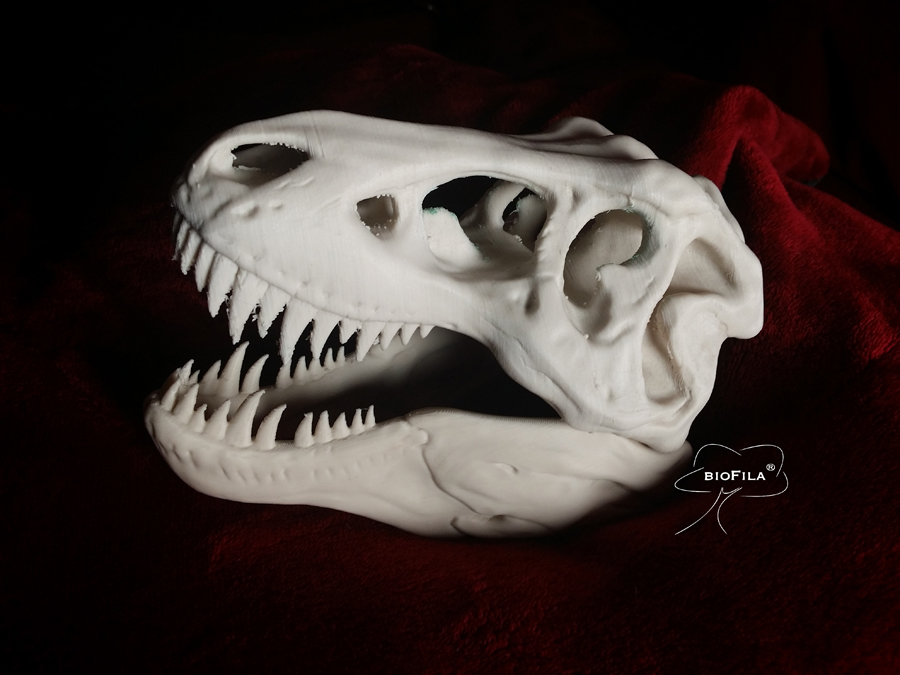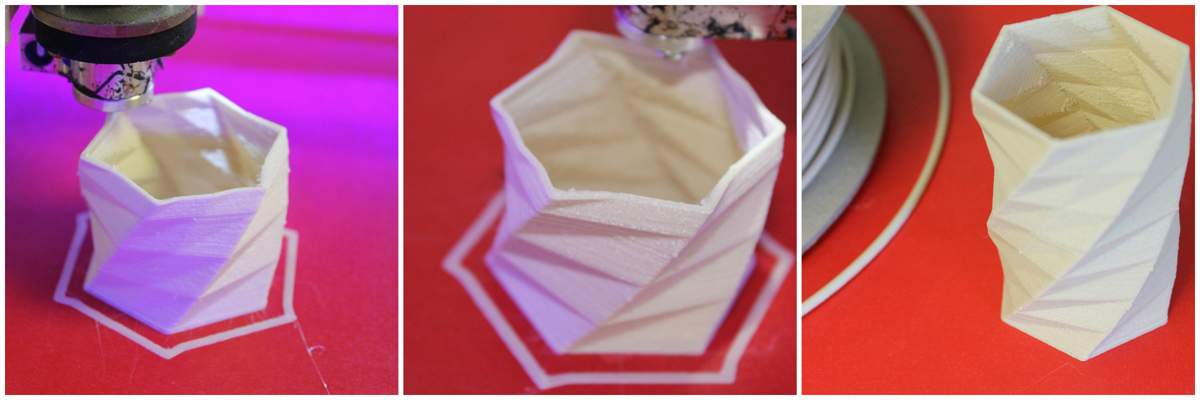Airwolf 3D recently tested a new biodegradable material called bioFila Linen, produced by twoBEars in Germany. Unlike other PLA-based materials bioFila doesn’t contain linen fibers. Instead, bioFila is composed of Lignins, an organic material that provides strength and rigidity to the cell walls of plants and one of the main ingredients found in paper. The texture of bioFila, when 3D printed, looks a lot like linen and is capable of producing rougher and more porous-looking structures when set on higher temperatures over 205°C.
Airwolf went to the far-end of bioFila’s recommended heat settings for their test of the new material, selecting the default settings in Astro Print for Laywoo-D3 (220° C hot end, 70° bed. 1st layer at .4mm). The material held up, printing accurately and smoothly, which suggests that it is forgiving of variances in print temperatures. The result is interesting: the final product has a visual texture similar to a linen lampshade, with the rigidity one would expect from a traditional PLA filament. Also, when handling the 3D object produced by bioFila the material seems to add a high degree of impact resistance when compared to PLA, though PLA fares better in tensile strength. Below is an overview of Airwolf’s comparison of bioFila to PLA and ABS.
bioFila, being composed of organic, natural materials, is biodegradable, non-toxic, recyclable, and food safe. The ease-of-use, non-toxicity, and biodegradability of the material will certainly lend itself to educational institutions, as well as to possible applications in agriculture and kitchenware. The unique aesthetics of the material will certainly catch artist’s eyes, as well. But, there is still research to be done into how well the prints hold up over time. Representatives from twoBEars say that the biodegradable filament was built to last as long as it is protected by environmental exposure.
TwoBEars founder, Benno Besler explains, “The printed objects will not change their aspect while staying in your apartment, but if you want to drop them out into nature, they will disappear in the same way as if they were made of wood…For example, my wife and I live in a very old house (350 yrs) that is made of wood, clay, and thatched roofing–all biodegradable–and after so many years it has always been a very good and comfortable home. Warm and dry and all.”
Furthermore, twoBEars confirms that, when/if you decide to throw your bioFila 3D printed object out into the elements, it will not leach harmful chemicals into the environment, like some other filaments. Overall, this seems to be a promising and environmentally sound material. We are excited to see what Makers do with it.





